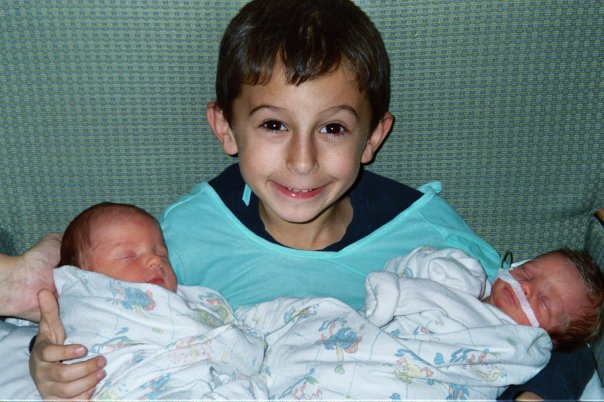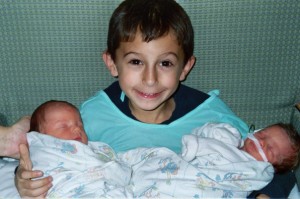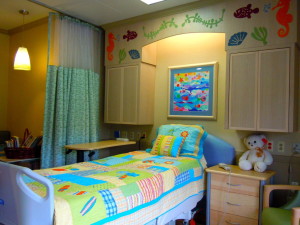10/29/2014
·Enable high contrast reading
Taking Action

Here at Courageous Parents Network, we are passionate about pediatric palliative care and the priceless value it provides children suffering from serious illness and their parents and siblings. We promote it here on our Website, in presentations to providers and patient groups, in materials we help write, in multiple blogs and at every meeting we have with parents we are meeting for the first time. Happily, we are not alone. There are many parents out there advocating for pediatric palliative care. Some parents share their experience with palliative care, some are motivated by the lack of palliative care that was offered to them. Some families fundraise, some lobby, some go back to school to work professionally in support care services such as social work or nursing. Most share their story, good or bad, to try to help the next family. Giving back is a large part of their child’s legacy and the healing process.
Here is such a parent— Lisa, whose own journey with her son suffered from the lack of palliative care. Lisa is on a mission to make it otherwise for families.
Lisa:
After a gap of almost seven years between the arrival of my first born and then giving birth to twins, we knew our lives were going to be turned upside down. What we didn’t know, however, is that I would be spending most of the next 16 months earning a surrogate medical, nursing, physical therapy, occupational therapy, respiratory, gastro, pharmacy, neurology and feeding specialty degree, among others. I quickly became proficient in the art of care coordination, insurance management, early intervention and state regulations for having a child with special needs. All of this on top of caring for twins—one seriously ill and one thankfully healthy—and their 7 year old brother, and finally my husband, the father, who was working his butt off to make sure that we had the money to pay for all of this insanity.
It took four months of carting Liam to specialist after specialist, test after test, to finally receive a diagnosis. Liam had Miller Dieker syndrome, a condition in which the brain does not form properly, causing difficulty swallowing, seizures, breathing issues and a whole host of other difficulties.
Post diagnosis is when the real fun began. Wanting to ensure that Liam was cared for in the best possible way, I followed orders and set up appointments with all the practitioners mentioned above. We also spent a lot of time in the hospital with frequent admissions every 6 weeks or so due to a pneumonia or other respiratory distress.
We began to need more support. My husband and I were taking shifts with Liam in the hospital, spending less time at home as a family as we recognized that things were heading downhill. But where would the support come from? We consulted with child life, social work, anyone who would listen, asking especially for assistance for our seven-year old son and how to explain the situation to him. I was given as list of therapists to call—yet one more task to add to my epic To-Do list. The first two didn’t return my call; the third specialized in eating disorders; the fourth, mercifully, was the therapy jackpot – she specialized in sibling bereavement.
As our hospital admissions mounted—with each admittance requiring that I start yet again from the beginning to explain Liam’s rare diagnosis, his meds, his feeding routine, his care protocol—I began to wonder if other families in a similar situation were having the same grueling experience. Was there a better way? Shouldn’t there be a better way?
One day, I received a visit from someone from the hospital’s palliative care team. The team had heard that Liam wasn’t doing well and then wanted to help set up hospice visits. Unfortunately, neither the palliative care team member nor the hospice nurse she put me in touch with had pediatric experience. (We were at a local hospital that had a pediatric unit, but was not itself a “Children’s Hospital.” Children’s hospitals increasingly, thankfully, have pediatric palliative care expertise.) Needless to say, this was a very frustrating experience but it had planted the seed: the term palliative care stuck with me.
Our last admission to the hospital, we were put on a quiet hallway with plenty of privacy. We knew that Liam would not be coming home again. Even now, seven years later, I recoil at the vivid memory of the hideous, impersonal surroundings of the hospital room: the wooden rocking chair, the metal crib, the flashing monitors, his ugly hospital gown, the linoleum floor. The environment made an impression, and not a good one. There had to be a better way.
When Liam died at age 16-months, we started a memorial fund at his service. We were hell-bent on providing that better way to care for families whose child journeyed a similar path to ours with Liam. The list of pediatric specialists had seemed infinite and yet a pediatric palliative care specialist wasn’t on it. Maddening, especially as I learned more about what palliative care can look like and how that ‘extra layer of support’ can benefit a family. The room Liam had lived in at the end had been quiet but cold. Upsetting! What hadn’t worked for us became the seed for Liam’s Room. We advocate for pediatric palliative care as a necessary care component for any child with a chronic, life-threatening illness. And for those families who must spend countless days, weeks or even months with their child in the hospital, we have redesigned a room in the hospital to be more family and child-friendly, with home-like furnishings, cheerful decor, toys, games and some of the amenities of home. (see the photo below.)
In the years since we launched Liam’s Room, due to families’ immense gratitude, we have opened a second hospital room at another local hospital and we have sponsored two physicians to become certified as pediatric palliative care specialists.
As I reflect back on Liam’s life and our experience in the hospital, I am filled with regrets for what didn’t happen. But I find healing and take pride in what is happening now, as Liam’s life has opened the door for others.




